- Home
- H. Beam Piper
The Answer Page 2
The Answer Read online
Page 2
whether Russiahad launched it--but it wasn't until tonight, until he had heard whatPitov had had to say, that he seriously doubted it. Pitov wouldn't lieabout it, and Pitov would have been in a position to have known thetruth, if the missile had been launched from Russia. Then he stoppedthinking about what was water--or blood--a long time over the dam.
The special policeman at the entrance to the launching site remindedthem that they were both smoking; when they extinguished, respectively,their cigarette and pipe, he waved the jeep on and went back to hisargument with a carload of tourists who wanted to get a good view of thelaunching.
"There, now, Lee; do you need anything else to convince you that thisisn't a weapon project?" Pitov asked.
"No, now that you mention it. I don't. You know, I don't believe I'vehad to show an identity card the whole time I've been here."
"I don't believe I have an identity card," Pitov said. "Think of that."
The lights blazed everywhere around them, but mostly about the rocketthat towered above everything else, so thick that it seemed squat. Thegantry-cranes had been hauled away, now, and it stood alone, but it wasstill wreathed in thick electric cables. They were pouring enoughcurrent into that thing to light half the street-lights in Buenos Aires;when the cables were blown free by separation charges at the blastoff,the generators powered by the rocket-engines had better be able to takeover, because if the magnetic field collapsed and that fifty-kilo chunkof negative-proton matter came in contact with natural positive-protonmatter, an old-fashioned H-bomb would be a firecracker to what wouldhappen. Just one hundred kilos of pure, two-hundred proof MC2.
The driver took them around the rocket, dodging assorted trucks andmobile machinery that were being hurried out of the way. The countdownwas just beyond two hours five minutes. The jeep stopped at the edge ofa crowd around three more trucks, and Doctor Eugenio Galvez, thedirector of the Institute, left the crowd and approached at an awkwardhalf-run as they got down.
"Is everything checked, gentlemen?" he wanted to know.
"It was this afternoon at 1730," Pitov told him. "And nobody's beenburning my telephone to report anything different. Are the balloons andthe drone planes ready?"
"The Air Force just finished checking; they're ready. Captain Urquiolaflew one of the planes over the course and made a guidance-tape; that'sbeen duplicated and all the planes are equipped with copies."
"How's the wind?" Richardson asked.
"Still steady. We won't have any trouble about fallout or with theballoons."
"Then we'd better go back to the bunker and make sure everybody there ison the job."
The loudspeaker was counting down to Two Hours One Minute.
"Could you spare a few minutes to talk to the press?" Eugenio Galvezasked. "And perhaps say a few words for telecast? This last is mostimportant; we can't explain too many times the purpose of thisexperiment. There is still much hostility, arising from fear that we aretesting a nuclear weapon."
The press and telecast services were well represented; there were closeto a hundred correspondents, from all over South America, from SouthAfrica and Australia, even one from Ceylon. They had three trucks, withmobile telecast pickups, and when they saw who was approaching, theyreleased the two rocketry experts they had been quizzing and pounced onthe new victims.
Was there any possibility that negative-proton matter might be used as aweapon?
"Anything can be used as a weapon; you could stab a man to death withthat lead pencil you're using," Pitov replied. "But I doubt ifnegamatter will ever be so used. We're certainly not working on weaponsdesign here. We started, six years ago, with the ability to producenegative protons, reverse-spin neutrons, and positrons, and thetheoretical possibility of assembling them into negamatter. We have justgotten a fifty kilogramme mass of nega-iron assembled. In those sixyears, we had to invent all our techniques, and design all ourequipment. If we'd been insane enough to want to build a nuclear weapon,after what we went through up North, we could have done so from memory,and designed a better--which is to say a worse--one from memory in a fewdays."
"Yes, and building a negamatter bomb for military purposes would be likedigging a fifty foot shaft to get a rock to bash somebody's head in,when you could do the job better with the shovel you're digging with,"Richardson added. "The time, money, energy and work we put in on thisthing would be ample to construct twenty thermonuclear bombs. And that'sonly a small part of it." He went on to tell them about the magneticbottle inside the rocket's warhead, mentioning how much electric currentwas needed to keep up the magnetic field that insulated the negamatterfrom contact with posimatter.
"Then what was the purpose of this experiment, Doctor Richardson?"
"Oh, we were just trying to find out a few basic facts about naturalstructure. Long ago, it was realized that the nucleonicparticles--protons, neutrons, mesons and so on--must have structure oftheir own. Since we started constructing negative-proton matter, we'vefound out a few things about nucleonic structure. Some rather oddthings, including fractions of Planck's constant."
A couple of the correspondents--a man from La Prensa, and anAustralian--whistled softly. The others looked blank. Pitov took over:
"You see, gentlemen, most of what we learned, we learned from puttingnegamatter atoms together. We annihilated a few of them--over there inthat little concrete building, we have one of the most massive steelvaults in the world, where we do that--but we assembled millions of themfor every one we annihilated, and that chunk of nega-iron inside themagnetic bottle kept growing. And when you have a piece of negamatteryou don't want, you can't just throw it out on the scrap-pile. We mighthave rocketed it into escape velocity and let it blow up in space, awayfrom the Moon or any of the artificial satellites, but why waste it? Sowe're going to have the rocket eject it, and when it falls, we can see,by our telemetered instruments, just what happens."
"Well, won't it be annihilated by contact with atmosphere?" somebodyasked.
"That's one of the things we want to find out," Pitov said. "We estimateabout twenty percent loss from contact with atmosphere, but the massthat actually lands on the target area should be about forty kilos. Itshould be something of a spectacle, coming down."
"You say you had to assemble it, after creating the negative protons andneutrons and the positrons. Doesn't any of this sort of matter exist innature?"
The man who asked that knew better himself. He just wanted the answer onthe record.
"Oh no; not on this planet, and probably not in the Galaxy. There may bewhole galaxies composed of nothing but negamatter. There may even beisolated stars and planetary systems inside our Galaxy composed ofnegamatter, though I think that very improbable. But when negamatter andposimatter come into contact with one another, the result is immediatemutual annihilation."
They managed to get away from the press, and returned as far as thebunkers, a mile and a half away. Before they went inside, Richardsonglanced up at the sky, fixing the location of a few of the moreconspicuous stars in his mind. There were almost a hundred men and womeninside, each at his or her instruments--view-screens, radar indicators,detection instruments of a dozen kinds. The reporters and telecastpeople arrived shortly afterward, and Eugenio Galvez took them in tow.While Richardson and Pitov were making their last-minute rounds, thecountdown progressed past minus one hour, and at minus twenty minutesall the overhead lights went off and the small instrument operators'lights came on.
Pitov turned on a couple of view-screens, one from a pickup on the roofof the bunker and another from the launching-pad. They sat down side byside and waited. Richardson got his pipe out and began loading it. Theloudspeaker was saying: "_Minus two minutes, one fifty nine, fiftyeight, fifty seven_--"
He let his mind drift away from the test, back to the world that hadbeen smashed around his ears in the autumn of 1969. He was doing that sooften, now, when he should be thinking about--
"_Two seconds, one second_. FIRING!"
It was a second later that his eyes focussed on the
left handview-screen. Red and yellow flames were gushing out at the bottom of therocket, and it was beginning to tremble. Then the upper jets, the onesthat furnished power for the generators, began firing. He lookedanxiously at the meters; the generators were building up power. Finally,when he was sure that the rocket would be blasting off anyhow, theseparator-charges fired and the heavy cables fell away. An instantlater, the big missile started inching upward, gaining speed by thesecond, first slowly and jerkily and then more rapidly, until it passedout of the field of the pickup. He watched the rising spout of fire fromthe other screen until it passed from sight.
By that time, Pitov had twisted a dial and gotten another view on theleft hand

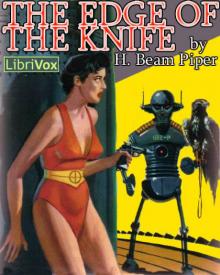 The Edge of the Knife
The Edge of the Knife Genesis
Genesis A Slave is a Slave
A Slave is a Slave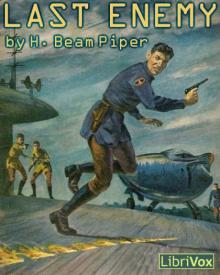 Last Enemy
Last Enemy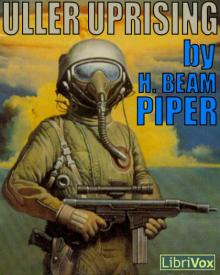 Uller Uprising
Uller Uprising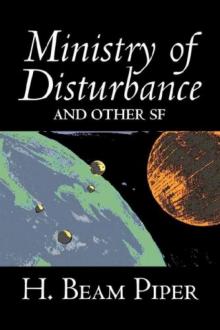 Ministry of Disturbance
Ministry of Disturbance Time and Time Again
Time and Time Again The Mercenaries
The Mercenaries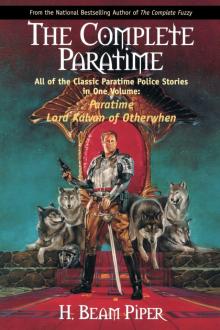 Police Operation
Police Operation He Walked Around the Horses
He Walked Around the Horses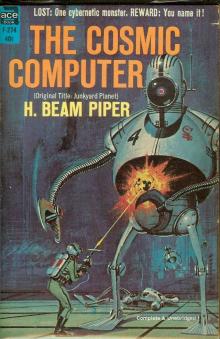 Time Crime
Time Crime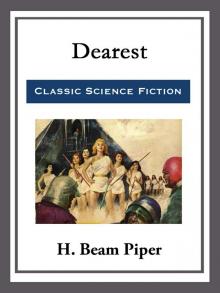 Dearest
Dearest Day of the Moron
Day of the Moron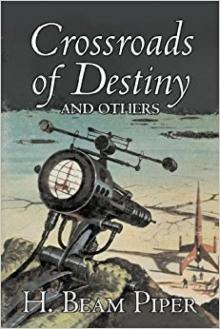 Crossroads of Destiny
Crossroads of Destiny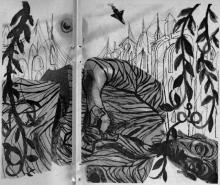 Graveyard of Dreams
Graveyard of Dreams The Cosmic Computer
The Cosmic Computer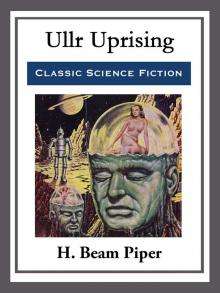 Ullr Uprising
Ullr Uprising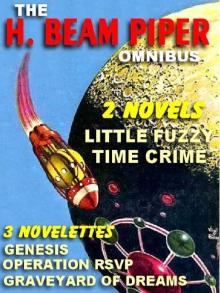 Operation R.S.V.P.
Operation R.S.V.P.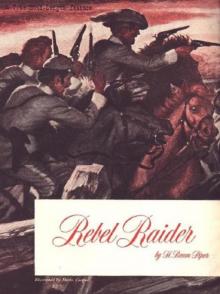 Rebel Raider
Rebel Raider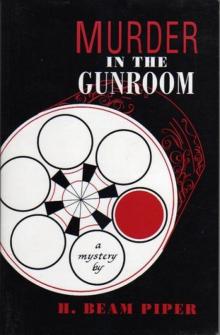 Murder in the Gunroom
Murder in the Gunroom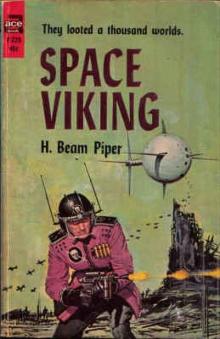 Space Viking
Space Viking The Answer
The Answer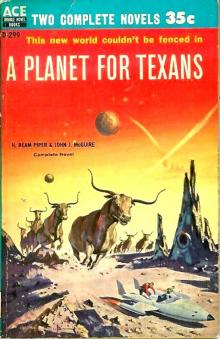 A Planet for Texans (aka Lone Star Planet)
A Planet for Texans (aka Lone Star Planet)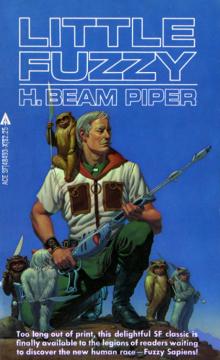 Little Fuzzy
Little Fuzzy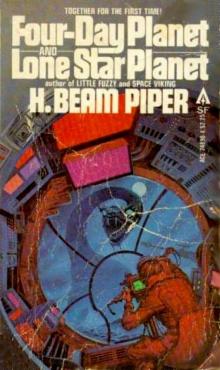 Four-Day Planet
Four-Day Planet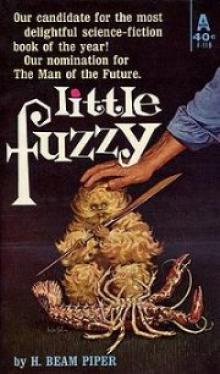 Little Fuzzy f-1
Little Fuzzy f-1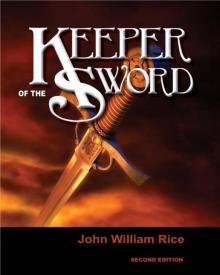 Keeper
Keeper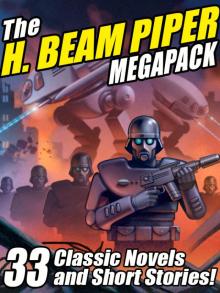 The H. Beam Piper Megapack
The H. Beam Piper Megapack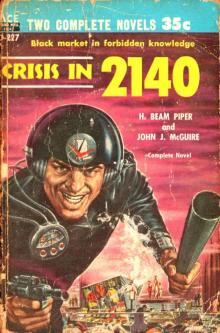 H. Beam Piper
H. Beam Piper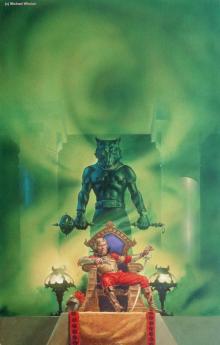 Lord Kalvan of Otherwhen
Lord Kalvan of Otherwhen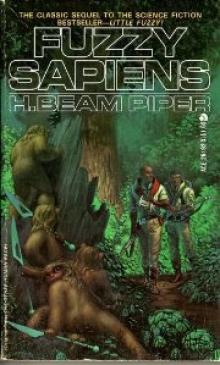 Fuzzy Sapiens f-2
Fuzzy Sapiens f-2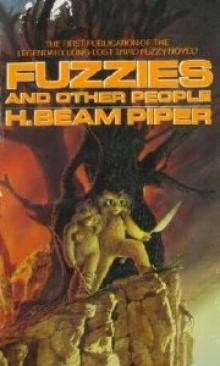 Fuzzies and Other People f-3
Fuzzies and Other People f-3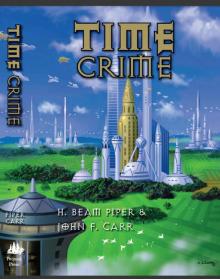 TIME PRIME
TIME PRIME Fuzzy Sapiens
Fuzzy Sapiens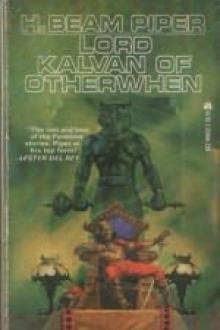 Lord Kalvan of Otherwhen k-1
Lord Kalvan of Otherwhen k-1 The Second H. Beam Piper Omnibus
The Second H. Beam Piper Omnibus